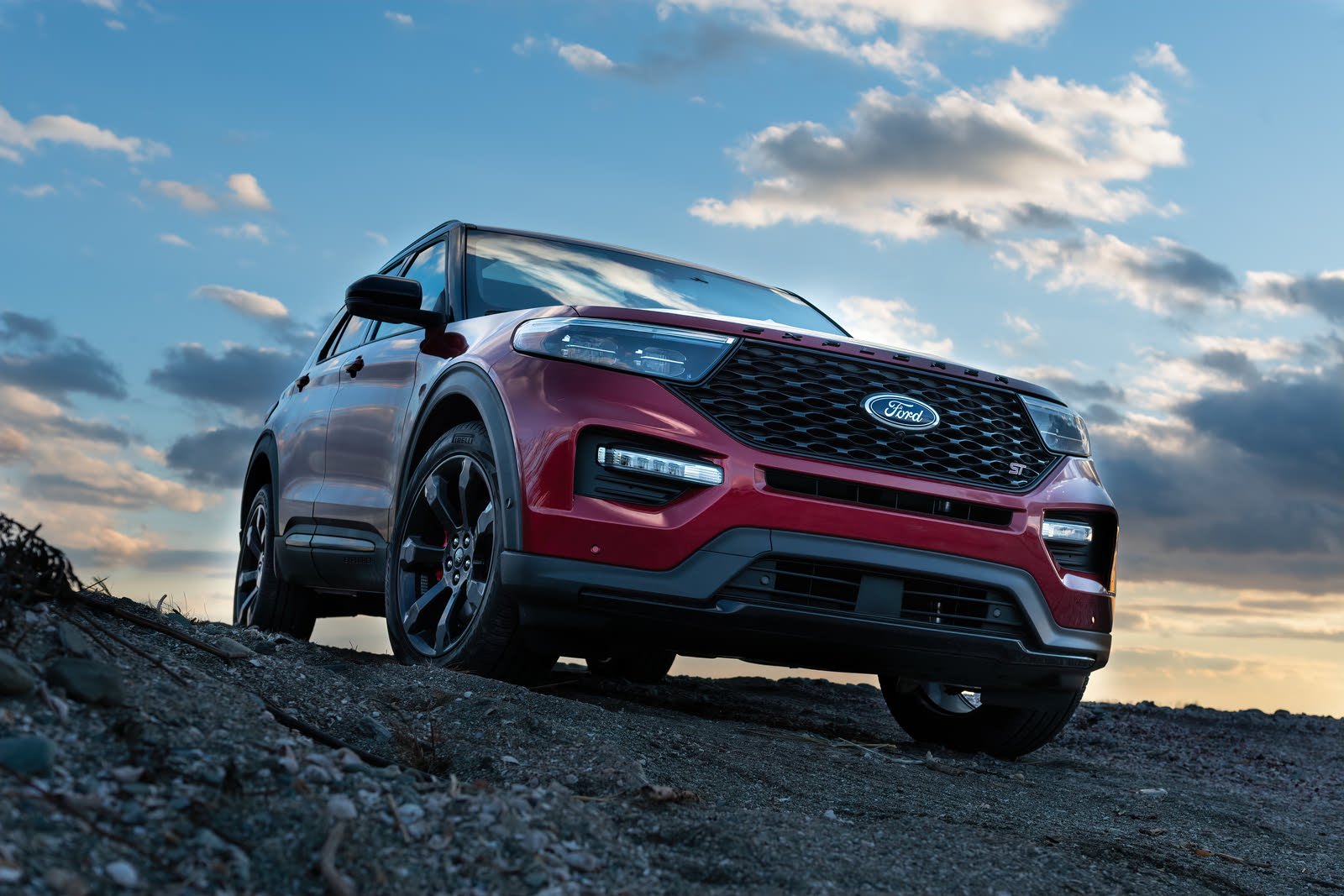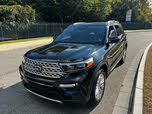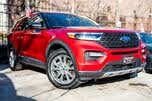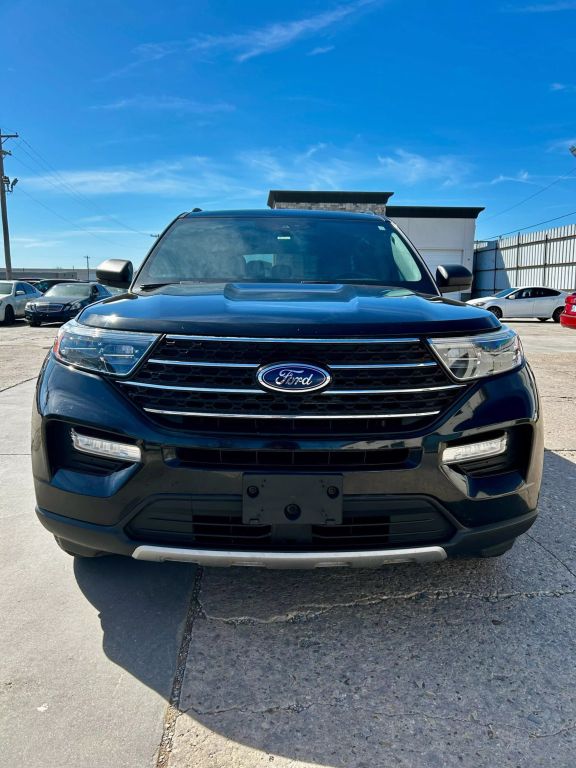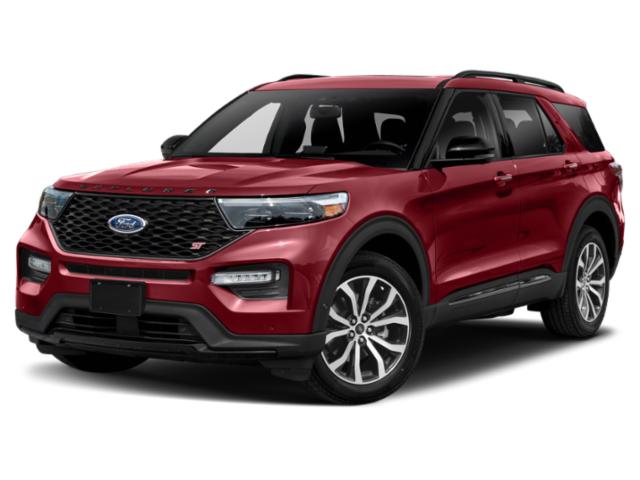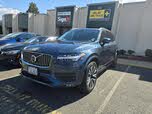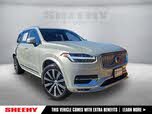2020 Ford Explorer vs 2021 Volvo XC90
Overview | ||
MSRP | $32,765 | $49,000 |
Average price | $25,420 | $34,192 |
Listings | ||
Ratings & Reviews | ||
User reviews | ||
Expert reviews | 7.2 out of 10Read full review | 7.7 out of 10Read full review |
Pros & cons | Pros
| Pros
|
Summary | For nearly 30 years, the Ford Explorer has settled into the American lexicon like Cheerios. We've gobbled up millions of them, from the rock-crawling Eddie Bauers of the 1990s to the brand-new ST that can take down sports cars. The 2020 Explorer brings an all-new chassis, cranks up the technology, and introduces hybrid and high-performance powertrains in a space the size of a small living room. The Explorer's also getting very expensive while other automakers catch on to Ford's winning formula—for a lot less money. | Volvo may be known for sensible station wagons, but the XC90 SUV is the Swedish automaker’s de facto flagship. The current generation debuted design features, technology, and powertrains that have since found their way into most other Volvo models. Several years into the current-generation model’s lifecycle, the XC90 is no longer a trendsetter, but remains Volvo’s contender in the competitive midsize luxury SUV segment, with the automaker’s typical emphasis on safety features. The current-generation XC90 launched for the 2016 model year, so most competitors—including the Audi Q7, Acura MDX, BMW X5, and Mercedes-Benz GLE-Class—have been updated or redesigned since then. The Cadillac XT6 and Lincoln Aviator didn’t even exist when this generation of XC90 launched. A redesigned version is expected to arrive soon, so changes to the 2021 XC90 are minimal. All 2021 Volvo models are now limited to 112 mph for safety reasons and get Care Key, which lets owners limit the top speed before loaning the car out to a friend or family member. The XC90 also gets a handful of newly standard tech features, and some small cosmetic changes. Volvo offers the XC90 in three trim levels—Momentum, R-Design, and Inscription—with three powertrain options: T5 and T6 gasoline engines, and the T8 plug-in hybrid. Our test car was a range-topping T8 Recharge Inscription, combining the top Inscription trim level with the plug-in hybrid powertrain, which has the highest output of the three. |
Video | No video found | |
Popular Features & Specs | ||
Engine | 2.3L 300 hp I4 | 2.0L 250 hp I4 |
Drive Train | RWD | FWD |
Seating Capacity | 7 | 7 |
Horsepower | 250 hp @ 5500 rpm | |
MPG City | 21 | 21 |
MPG Highway | 28 | 30 |
Engine | ||
Engine Name | 2.3L 300 hp I4 | 2.0L 250 hp I4 |
Torque | 258 lb-ft @ 1500 rpm | |
Horsepower | 250 hp @ 5500 rpm | |
Drivetrain | RWD | FWD |
Fuel Economy | ||
MPG City | 21 | 21 |
MPG Highway | 28 | 30 |
Interior | ||
Seating Capacity | 7 | 7 |
Key Features | ||
Sunroof/Moonroof | Standard | |
Safety | ||
Front Crash Overall | 5 | 5 |
Side Crash Overall | 5 | 5 |
Dimensions & Capacity | ||
Cargo Space | 18.2 cu ft | 15.8 cu ft |
Curb Weight | 4345 lbs | 4374 lbs |
Height | 69.9 in | 69.9 in |
Length | 198.8 in | 195.0 in |
Width | 89.3 in | 84.3 in |
Wheelbase | 119.1 in | 117.5 in |
Maximum Payload | 1425 lbs | 1631 lbs |
Number of doors | 4 | 4 |
Maximum Towing Capacity | 5300 lbs | 4000 lbs |
The 2020 Ford Explorer was a striking vehicle, more handsome than the Land Rover Discovery. The latest model refined its upscale, utilitarian design by slimming down the body panels and giving it a lower, more athletic appearance. The widened headlights, extra-large grille, and italic "Explorer" lettering on the hood's edge created a prominent and recognizable face. The ST version, with its black 21-inch rims, blacked-out trim, red brake calipers, rich Rapid Red paint, and quad exhaust pipes, was particularly eye-catching. However, the interior was a letdown. Despite the high price tag, the materials felt cheap, with low-grade vinyl and rough-grained plastic dominating the cabin. The switchgear felt solid, but the overall interior quality did not match the exterior's appeal.
The 2021 Volvo XC90 successfully reshaped Volvo's image with its design. While maintaining traditional styling features like a boxy profile and a blunt front end, the XC90 added more character with softer lines, more chrome, and distinctive LED headlights with "Thor’s Hammer" daytime running lights. The Inscription test car, with its extra chrome trim and optional 21-inch alloy wheels, was the flashiest of the XC90 trim levels. Inside, the XC90 embraced Swedish minimalism with thoughtfully arranged, high-quality materials. The matte-finish wood trim and optional wool upholstery added a unique touch, while the Orrefors crystal shifter provided a high-end feel. The interior was restrained yet luxurious, offering a more cohesive and upscale experience than the Explorer.
The 2020 Ford Explorer offered a range of powertrains, starting with a 2.3-liter turbo inline-four producing 300 horsepower and 310 pound-feet of torque. The ST trim featured a 3.0-liter twin-turbo V6 with 400 horsepower and 415 pound-feet of torque, paired with a 10-speed automatic transmission. The rear-wheel-drive chassis provided even weight distribution, enhancing handling and ride quality. The Explorer ST was particularly nimble, with precise steering and flat cornering. The hybrid option combined a 3.3-liter V6 with an electric motor for a net 318 horsepower, but it did not offer significant fuel economy benefits. Towing capacity ranged from 5,000 to 5,600 pounds, depending on the powertrain. The Explorer also featured seven drive modes for various conditions, making it versatile for different driving scenarios.
The 2021 Volvo XC90 offered three powertrains, all based on a 2.0-liter four-cylinder engine with an eight-speed automatic transmission. The T5 engine was turbocharged, producing 250 horsepower and 258 pound-feet of torque. The T6 engine was both turbocharged and supercharged, delivering 316 horsepower and 295 pound-feet of torque. The T8 Twin Engine plug-in hybrid combined the T6 engine with electric assist, producing 400 horsepower and 472 pound-feet of torque. The XC90's ride quality was excellent, especially with the optional air-suspension system, and it handled corners well without excessive body roll. However, the small engine struggled to provide the same flexibility as larger engines in competitor SUVs. The XC90's towing capacity was 5,000 pounds for most models, with the base FWD T5 rated at 4,000 pounds.
The 2020 Ford Explorer offered ample interior space, making it ideal for long road trips. The second row featured air vents, USB ports, a center console, and a panoramic moonroof, creating a first-class feel. The third row was spacious enough for six-foot-tall adults on short journeys, although the bench was too flat for long-distance comfort. Cargo space was 18 cubic feet behind the third row, 48 cubic feet behind the second row, and 88 cubic feet with all seats folded. The Explorer's physical knobs and switches made it easy to use, although the thick D-pillars and fuzzy 360-degree cameras were drawbacks.
The 2021 Volvo XC90 was available in six-seat or seven-seat configurations, with headroom and legroom in all three rows being about average for the segment. The third row was tight for adults, and the seats in both the second and third rows lacked support. The optional power moonroof and upright roof profile gave the interior a spacious feel. The front seats were 10-way power-adjustable with heating, ventilation, and massage functions, but the steering wheel was not power-adjustable. Cargo space was 11.2 cubic feet with all seats in place, 34.1 cubic feet with the rear seats folded, and 64.1 cubic feet with the second and third rows folded, which was near the bottom of the segment. The XC90 also featured a hands-free power tailgate.
The 2020 Ford Explorer came standard with an 8-inch touchscreen, Sync 3 infotainment, Apple CarPlay, Android Auto, and 4G WiFi. Factory navigation was standard on all models except the base XLT. Keyless entry, remote start, 3-zone climate control, and SiriusXM satellite radio were also standard. The Premium Technology Package for ST and Platinum models included a 10-inch vertical touchscreen and a 12-inch digital instrument cluster. The touchscreen was user-friendly, but the instrument panel felt unfinished, with wasted screen space and limited customization options. The Co-Pilot360 Assist+ semi-automated driving system was available but not as effective as competitors' systems.
The 2021 Volvo XC90 featured the Sensus infotainment system with a 9-inch touchscreen, 12.3-inch digital instrument cluster, Apple CarPlay/Android Auto compatibility, Bluetooth, and a built-in WiFi hotspot. The portrait-oriented touchscreen was easy to use, allowing for tablet-like swiping across menus. The lack of analog backup controls was not an issue, as the touchscreen worked well and complemented the minimalist interior design. However, the amount of text and typeface made reading some menus difficult while driving. The wireless charging pad added for 2021 was too small for most phones, and the second-row USB-C ports limited charging options for newer phones.
The 2020 Ford Explorer came standard with Ford Co-Pilot 360, which included forward emergency braking, blind-spot monitoring, auto high beams, and lane-keep assist. The Assist+ option added adaptive cruise control with steering assist and reverse braking. The Explorer had not been tested by the NHTSA, but the IIHS rated it "Acceptable" in the small overlap test on the driver's side.
The 2021 Volvo XC90 received the highest "Top Safety Pick+" rating from the IIHS for non-hybrid models, with top "Good" scores in all crash tests and a "Superior" rating for front-crash prevention in vehicle-to-vehicle testing. The NHTSA gave all XC90 models a five-star overall safety rating. The XC90 offered more standard safety features than most competitors, including lane-keep assist, driver-attention monitor, traffic-sign recognition, blind-spot monitoring, rear cross-traffic alert, automatic emergency braking, and Volvo's Pilot Assist driver aid. Pilot Assist was smooth and quick to react but limited in handling highway curves.
CarGurus highlights

According to CarGurus experts, the overall rating for the 2020 Ford Explorer is 7.2 out of 10, while the 2021 Volvo XC90 scores 7.7 out of 10. Based on these ratings, the 2021 Volvo XC90 is the better choice, offering a more luxurious interior, superior safety features, and a user-friendly infotainment system.
Choose the 2020 Ford Explorer if:
Shop Now- You prioritize powerful engine options and nimble handling.
- You need ample cargo space and a spacious interior for road trips.
- You value physical controls for ease of use.
Choose the 2021 Volvo XC90 if:
Shop Now- You prefer a luxurious, minimalist interior with high-quality materials.
- You want a comprehensive suite of standard safety features.
- You appreciate a user-friendly infotainment system with a sleek design.

By: CarGurus + AI
At CarGurus, our team of experienced automotive writers remain at the heart of our content operation, conducting hands-on car tests and writing insightful guides that are backed by years of industry experience. To complement this, we are harnessing AI to make our content offering more diverse and more helpful to shoppers than ever. To achieve this, our AI systems are based exclusively on CarGurus content, ratings and data, so that what we produce is both unique to CarGurus, and uniquely helpful to car shoppers.
